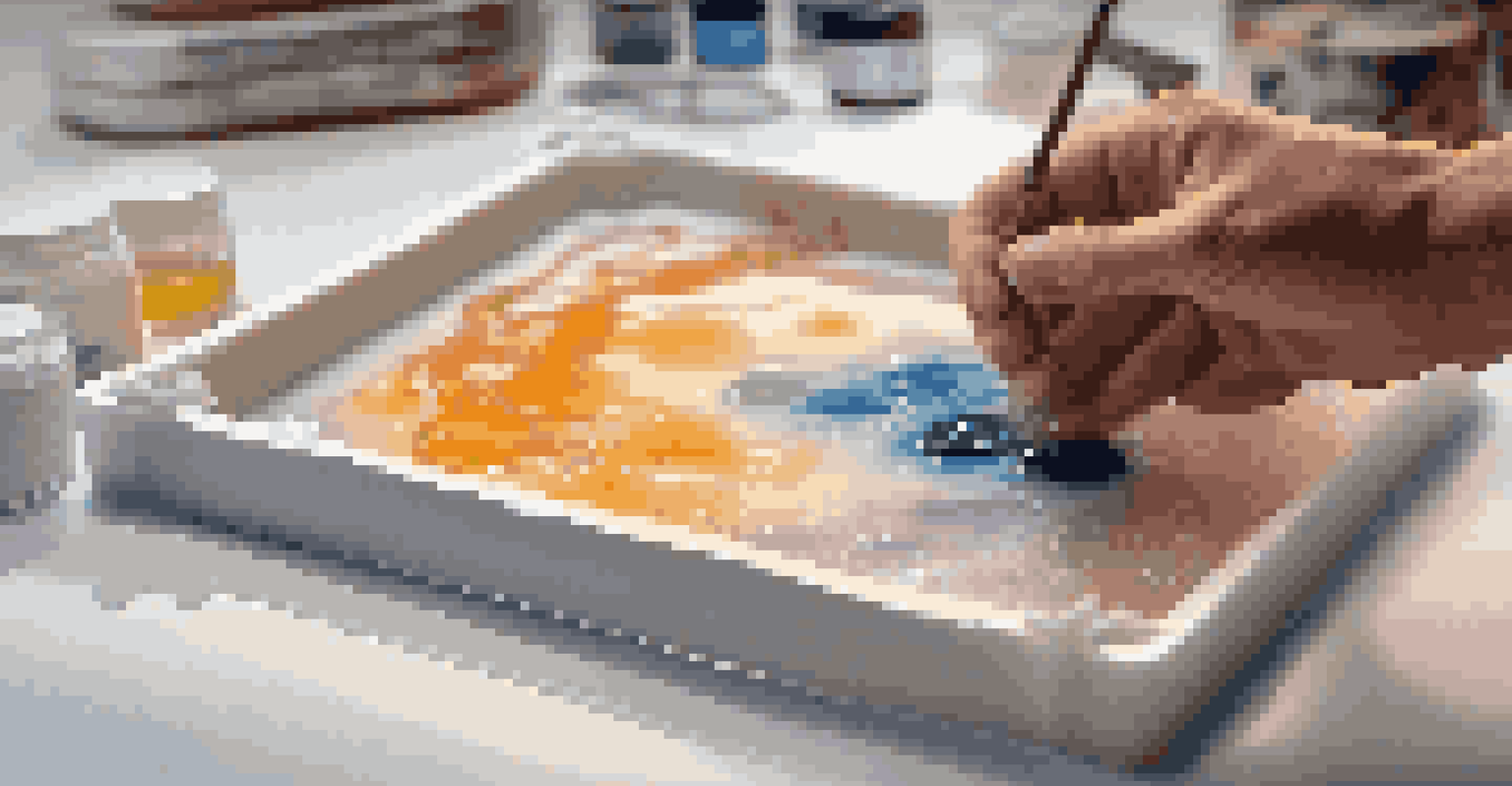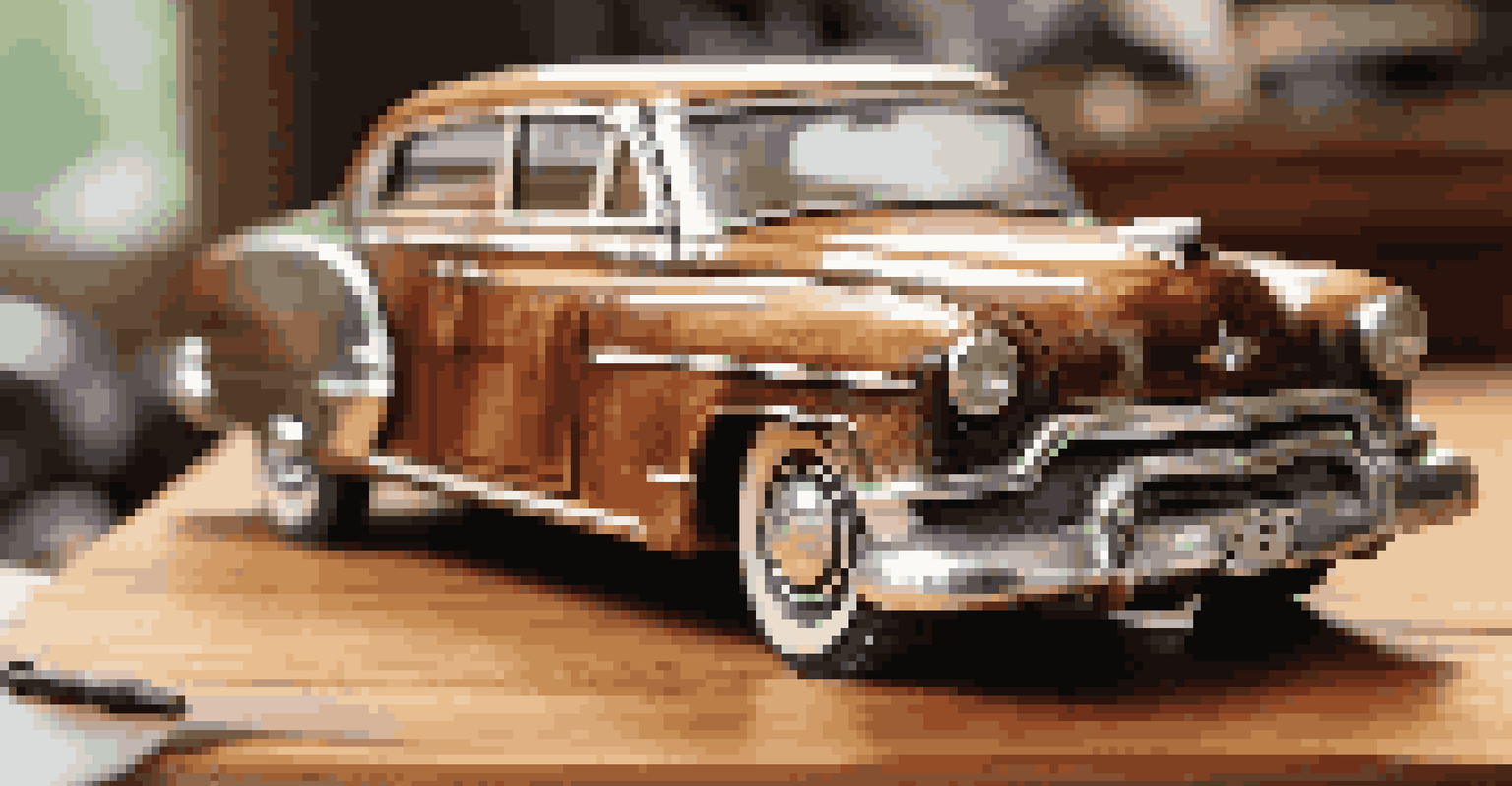Exploring the Use of Resin in Scale Model Building

What is Resin and Why Use It in Model Building?
Resin is a synthetic material that's become increasingly popular in the world of scale model building. Its unique properties allow for intricate details and a smooth finish, making it ideal for creating realistic models. Unlike traditional materials like plastic or wood, resin can capture fine textures and tiny components, giving builders more creative freedom.
Creativity takes courage.
One of the standout features of resin is its ability to be cast into various molds, which means you can produce multiple copies of a part without losing detail. This is especially useful for builders who want to create a series of models or replicate specific components. Additionally, resin can be mixed with pigments, allowing for a variety of colors and effects right from the start.
However, working with resin does require some care. It can be sensitive to temperature and humidity, and proper safety precautions are necessary since the fumes can be harmful. But with the right approach, the benefits of using resin far outweigh the challenges, making it a favorite for many model builders.
Types of Resin Commonly Used in Model Building
There are several types of resin used in scale model construction, each with its own unique properties. Epoxy resin is popular due to its strength and clarity, making it great for clear parts or when a tough finish is required. Another common type is polyurethane resin, which is often used for its quick curing time and versatility in casting.

One lesser-known option is silicone resin, which is primarily used for creating molds rather than the models themselves. This material is flexible and durable, allowing for repeated use without losing the mold's shape. Each type of resin can produce different effects, so understanding their characteristics can help you choose the best one for your project.
Resin Offers Unique Modeling Benefits
Resin's ability to capture intricate details and create smooth finishes makes it a preferred material for model builders.
Ultimately, the choice of resin depends on the specific needs of your model. For example, if you're looking for a glossy finish, epoxy might be your best bet, whereas polyurethane can be ideal for more complex designs. With a little experimentation, you'll find the right resin that suits your modeling style.
Essential Tools for Working with Resin
To successfully work with resin in model building, having the right tools is crucial. Basic supplies include mixing cups, stirring sticks, and safety gloves, which are essential for keeping your workspace clean and safe. Additionally, a digital scale can help you measure the resin and hardener accurately, ensuring a perfect mix every time.
The best way to predict the future is to create it.
For more intricate work, consider investing in silicone molds, which can help you create detailed components. A heat gun can also be handy for removing air bubbles that might form in the resin, resulting in a smoother finish. Remember, preparation is key, so take the time to gather all your tools before starting your project.
Lastly, don’t forget about safety equipment. A well-ventilated workspace is important, and using a respirator mask can protect you from fumes. By equipping yourself with the right tools and safety gear, you can ensure a more enjoyable and successful resin modeling experience.
Tips for Mixing and Pouring Resin Correctly
Mixing resin may seem straightforward, but getting it right is essential for a successful outcome. Always follow the manufacturer's instructions regarding the resin and hardener ratios, as even slight deviations can affect the curing process. Stir the mixture slowly to minimize air bubbles, and make sure to scrape the sides and bottom of your mixing cup thoroughly.
When it comes time to pour the resin, work slowly and deliberately. Pouring too quickly can introduce bubbles, which can spoil the final look of your model. If you're using a mold, consider pouring from one corner and allowing the resin to flow gently into the space to reduce agitation.
Safety and Tools Are Essential
Using the right tools and safety precautions is crucial for a successful and enjoyable resin modeling experience.
Lastly, patience is key! Allow the resin to set undisturbed for the recommended time before demolding. Rushing this process may lead to misformed parts or incomplete curing, ultimately affecting the quality of your model. Taking these steps will ensure that your resin pieces come out just as you envisioned.
Finishing Techniques for Resin Models
After your resin model has cured, you may want to enhance its appearance with finishing techniques. Sanding is a common method used to smooth out any imperfections and prepare the surface for painting. Start with a coarse grit sandpaper and gradually move to finer grits for the best results, creating a smooth surface that’s ready for detailing.
Painting resin models requires special care to ensure the paint adheres properly. Before applying paint, it’s a good idea to wash the model with warm, soapy water to remove any residue from the casting process. Once dry, you can use a primer specifically designed for resin to improve paint adhesion and enhance colors.
Finally, consider adding weathering effects or clear coats to give your model a realistic finish. Techniques like dry brushing or using washes can bring out details and create depth in your paint job. With these finishing touches, your resin model can transform from a simple piece to a stunning work of art.
Common Mistakes to Avoid When Using Resin
Even seasoned builders can make mistakes when working with resin, so it’s important to be aware of common pitfalls. One frequent error is not measuring the resin and hardener accurately, which can lead to incomplete curing or even a sticky mess. Always use a digital scale for precise measurements and follow the instructions closely.
Another mistake involves pouring resin too thickly in one go. While it might seem efficient, this can lead to overheating and warping of your model. Instead, pour in thinner layers and allow them to cure between applications for better results.
Avoid Common Mistakes with Resin
Being aware of frequent errors, such as inaccurate measurements and neglecting safety, can enhance your resin modeling results.
Lastly, neglecting safety precautions can have serious consequences. Make sure to work in a well-ventilated area and wear protective gear, as the fumes and dust can be harmful. By being mindful of these common mistakes, you can enhance your experience and achieve better results with your resin models.
Resources and Communities for Resin Model Builders
The world of resin model building is vast, and finding resources can greatly enhance your skills. Online forums and communities are excellent places to share your work, ask questions, and receive feedback from fellow enthusiasts. Websites like Reddit and dedicated modeling forums often have sections specifically for resin builders, where you can connect with others who share your passion.
YouTube is another fantastic resource, offering countless tutorials and walkthroughs that can help you refine your techniques. Many experienced modelers share their processes, from mixing resin to advanced painting methods. Watching these videos can provide valuable insights and inspire new ideas for your own projects.

Lastly, consider investing in books or e-courses that focus on resin modeling. These resources can offer in-depth knowledge and tips that you may not find elsewhere. By engaging with these resources and communities, you'll continue to grow as a builder and enjoy the journey of scaling your modeling skills.